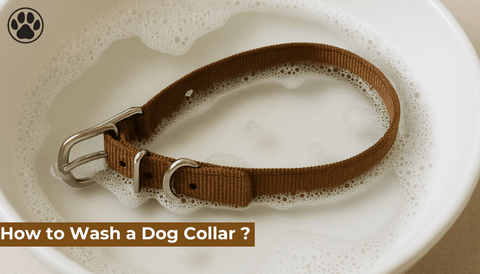
Are Bully Sticks Safe for Dogs ?
of reading - words
Are Bully Sticks Safe for Dogs? A Complete Guide
When it comes to dog treats, bully sticks are one of the most popular and widely recommended chew options on the market. But many dog owners still ask, are bully sticks safe for dogs? While these natural chews offer several benefits, there are also important safety considerations every pet parent should know.
In this guide, we'll explore what bully sticks are, their pros and cons, how to choose a safe product, and tips for responsible use. By the end, you'll have a clear understanding of whether they’re a suitable treat for your canine companion.
What Are Bully Sticks?
Bully sticks are single-ingredient dog chews made from the pizzle (penis) of a bull or steer. They are cleaned, dried, and often baked to create a long-lasting, flavorful treat that dogs love.
These chews come in various sizes, thicknesses, and shapes (straight, braided, curly) to suit different breeds and chewing styles. Unlike rawhide, bully sticks are easily digestible, making them a preferred choice for many pet owners and veterinarians.
Are Bully Sticks Safe for Dogs?
The short answer is: yes, bully sticks are generally safe for dogs, but only when used correctly. They offer several health benefits but also carry some risks if not chosen or supervised properly.
Let’s break it down.
The Benefits of Bully Sticks
-
Natural Ingredients: Bully sticks are made from just one ingredient with no additives, making them ideal for dogs with food sensitivities or allergies.
-
Digestibility: Unlike rawhide, bully sticks break down in a dog’s stomach and are less likely to cause blockages.
-
Dental Health: The act of chewing helps reduce plaque and tartar buildup, promoting better oral hygiene.
-
Mental Stimulation: Chewing provides mental enrichment, helping to relieve boredom and anxiety in dogs.
-
High Protein: Bully sticks are rich in protein, supporting muscle development and energy levels.
The Potential Risks
Despite their advantages, it’s important to be aware of the following concerns:
-
Choking Hazard: If a dog swallows a large piece without chewing it thoroughly, it can become lodged in the throat or digestive tract.
-
Caloric Content: Bully sticks are calorie-dense. Overconsumption may contribute to weight gain, especially in smaller or less active dogs.
-
Bacterial Contamination: Some bully sticks may carry harmful bacteria like salmonella if not processed or stored properly.
-
Odor and Cleanliness: Low-quality products may have a strong odor or come from questionable sources, increasing the risk of contamination.
-
Hardness for Puppies or Senior Dogs: For dogs with fragile teeth, overly hard chews can lead to dental damage.
How to Choose Safe Bully Sticks
If you decide to give your dog bully sticks, selecting a high-quality product is key to minimizing risks. Here are some important tips:
1. Look for Single-Ingredient, Natural Products
Choose bully sticks with no artificial flavors, colors, or preservatives. Look for products labeled as 100% beef or steer pizzle.
2. Buy From Reputable Brands
Select companies with transparent sourcing, strict safety standards, and third-party testing for contaminants. U.S.-made or FDA-certified treats tend to be more reliable.
3. Choose the Right Size and Shape
Pick a chew that matches your dog's size, breed, and chewing habits. Larger dogs need thicker, longer bully sticks, while smaller dogs should have thinner ones.
4. Monitor for Odor and Freshness
Odor-free doesn’t always mean safer, but it often indicates better processing. If the product smells rancid or has a greasy surface, it’s best to discard it.
5. Avoid Splinters or Sharp Ends
Check the chew for sharp pieces or splinters, which could injure your dog's mouth or digestive system.
Tips for Safe Use of Bully Sticks
To ensure your dog enjoys bully sticks without the risks, follow these simple guidelines:
-
Always supervise your dog while chewing. Remove the stick when it becomes small enough to swallow.
-
Limit chewing time to avoid overeating or dental fatigue. 10–15 minutes per session is usually enough.
-
Store bully sticks properly in a sealed container to maintain freshness and avoid bacterial growth.
-
Introduce gradually, especially if your dog is new to this type of chew.
-
Use a bully stick holder to secure the treat and prevent choking on small pieces.
Are Bully Sticks Suitable for Puppies?
Yes, bully sticks can be safe for puppies, but there are a few considerations:
-
Wait until your puppy has developed enough chewing strength—usually after 12 weeks of age.
-
Choose softer, thinner bully sticks specifically made for puppies.
-
Always supervise closely to avoid any risk of injury or choking.
Are Bully Sticks Safe for Senior Dogs?
Older dogs may have more fragile teeth or dental issues. For them:
-
Select low-density bully sticks or softer chews designed for seniors.
-
Monitor chewing behavior and check for any signs of discomfort or tooth damage.
How Often Should You Give Bully Sticks?
It depends on your dog’s size, diet, and activity level. Generally:
-
Small dogs: 1–2 times per week
-
Medium to large dogs: Up to 3 times per week
-
Always reduce meal portions slightly to account for the calories in the chew
Consult your veterinarian to tailor the frequency to your dog’s specific needs.
Final Verdict: Are Bully Sticks Safe for Dogs?
Bully sticks are a safe and healthy treat for most dogs when chosen carefully and used responsibly. They offer dental, nutritional, and mental benefits that make them a valuable addition to your dog’s routine. However, no treat is entirely risk-free.
Always buy high-quality products, supervise chewing, and consult your vet if your dog has special dietary needs or health conditions. With the right precautions, bully sticks can be a rewarding and enjoyable treat your dog will love.
FAQ
Are bully sticks digestible for dogs?
Yes, unlike rawhide, bully sticks are fully digestible and break down naturally in your dog’s stomach.
Can bully sticks cause diarrhea?
Some dogs may experience mild digestive upset if they chew too much or are new to bully sticks. Introduce slowly and monitor your dog’s reaction.
How long should a dog chew on a bully stick?
Limit chew sessions to 10–15 minutes, especially for small or first-time users. Always supervise and remove small pieces.
Do vets recommend bully sticks?
Many veterinarians recommend high-quality bully sticks for their dental benefits and natural ingredients, but only under supervision.
Can dogs choke on bully sticks?
Yes, if a dog swallows a large piece. Always supervise and consider using a chew holder to reduce the risk.
Are odor-free bully sticks safer?
Not necessarily safer, but they are typically cleaned more thoroughly. Still, check the source and quality of the product.




